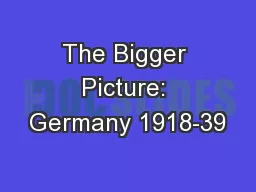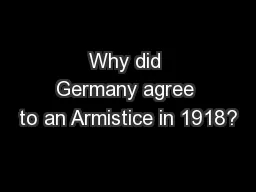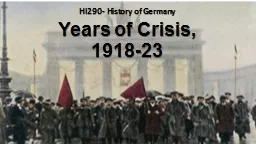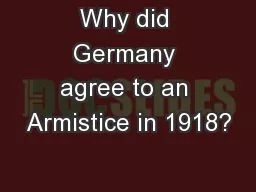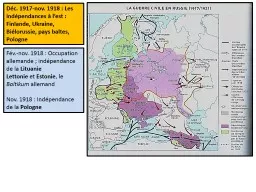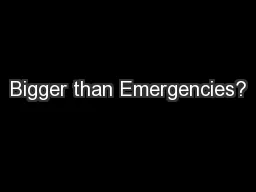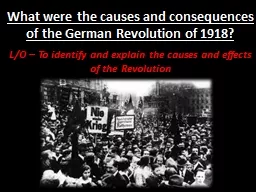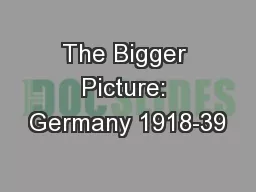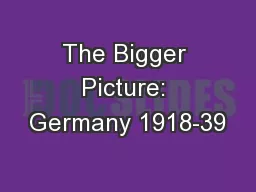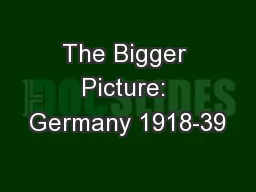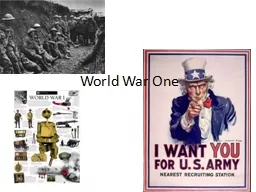PPT-The Bigger Picture: Germany 1918-39
Author : kittie-lecroy | Published Date : 2018-10-09
The Weimar Republic 191833 Hitler and the Nazi Party 191933 The Nazi Dictatorship 193339 How Hitler became Fuhrer The Police State The Churches Propaganda Why there
Presentation Embed Code
Download Presentation
Download Presentation The PPT/PDF document "The Bigger Picture: Germany 1918-39" is the property of its rightful owner. Permission is granted to download and print the materials on this website for personal, non-commercial use only, and to display it on your personal computer provided you do not modify the materials and that you retain all copyright notices contained in the materials. By downloading content from our website, you accept the terms of this agreement.
The Bigger Picture: Germany 1918-39: Transcript
Download Rules Of Document
"The Bigger Picture: Germany 1918-39"The content belongs to its owner. You may download and print it for personal use, without modification, and keep all copyright notices. By downloading, you agree to these terms.
Related Documents

